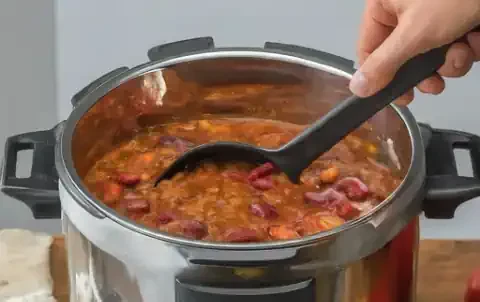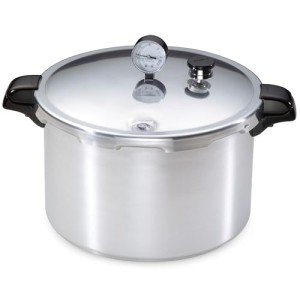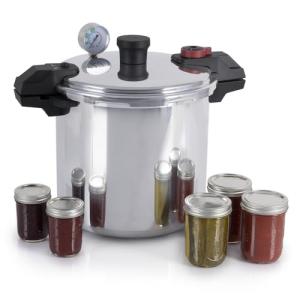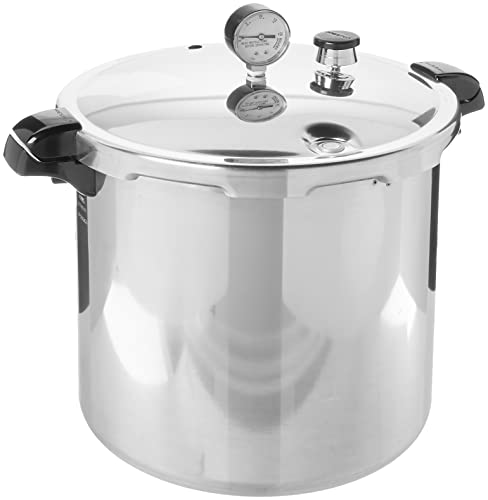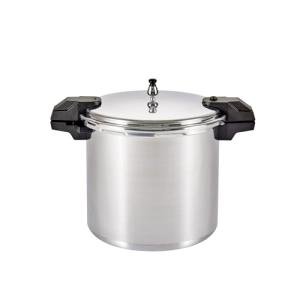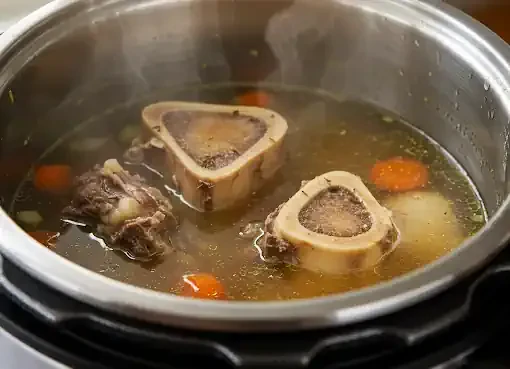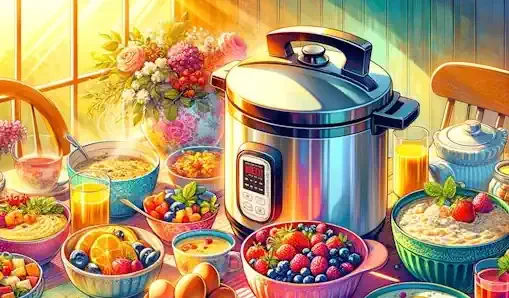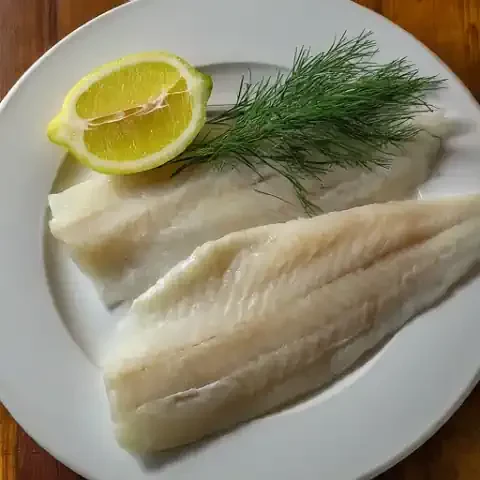Introduction to Pressure Cooking for Large Groups
Pressure cooking has long been a secret weapon for home cooks, but its magic truly shines when preparing meals for a crowd. Whether you're hosting a family gathering, a neighborhood potluck, or a large-scale event, pressure cooking can transform the way you approach cooking for large groups. Let's dive into the world of pressure cooking for crowds and discover how it can simplify your culinary endeavors.
Benefits of Pressure Cooking for Crowds
Pressure cooking isn't just about speed; it offers a multitude of advantages, especially when feeding a large group:
Efficiency: Pressure cookers significantly reduce cooking times, allowing you to prepare dishes in a fraction of the time compared to traditional methods. This efficiency is invaluable when you have a hungry crowd to feed.
Tenderness and Flavor: The high pressure and steam environment of a pressure cooker work wonders on tougher cuts of meat, transforming them into succulent and flavorful dishes. It also infuses flavors deeply into ingredients, resulting in richer, more satisfying meals.
Nutrient Retention: Unlike boiling or simmering, pressure cooking helps preserve the nutrients in food. This is especially important when feeding a crowd, ensuring that everyone gets their fill of vitamins and minerals.
Energy Savings: Pressure cookers are more energy-efficient than conventional ovens or stovetops, which can translate into significant savings on your energy bills, particularly when cooking for a large number of people.
Versatility: Pressure cookers are incredibly versatile tools. They can be used to cook a wide range of dishes, from soups and stews to meats, grains, and even desserts. This versatility makes them indispensable when catering to diverse tastes.
Convenience: Pressure cooking often involves minimal hands-on time. Once the ingredients are in the pot, the pressure cooker does the work, freeing you up to focus on other tasks or simply relax. This convenience is a lifesaver when juggling multiple culinary responsibilities.
Essential Pressure Cooker Safety Tips
Safety is paramount when using a pressure cooker, especially when cooking for a crowd. Follow these essential safety tips:
Read the Manual: Always read the manufacturer's instructions thoroughly before using your pressure cooker. Familiarize yourself with its specific features, functions, and safety mechanisms.
Check for Wear and Tear: Inspect the gasket, valves, and other components regularly for any signs of damage or wear. Replace them as needed to ensure the pressure cooker functions safely.
Never Overfill: Do not fill the pressure cooker beyond its recommended capacity, typically two-thirds full for most foods. Overfilling can block vents and lead to dangerous pressure buildup.
Release Pressure Carefully: Always follow the manufacturer's instructions for releasing pressure. Never force open a pressure cooker while it is still under pressure. Use the quick-release method with caution, as it can cause hot steam and food to splatter.
Use Enough Liquid: Ensure there is enough liquid in the pot to generate steam and prevent food from burning. The amount of liquid needed will vary depending on the recipe.
Cool Down Properly: Allow the pressure cooker to cool down naturally or use the cold water release method (if safe for your model) before opening it.
Choosing the Right Pressure Cooker Size
Selecting the right pressure cooker size is crucial when cooking for a crowd. Consider the following factors:
Number of Servings: Determine how many people you'll be feeding regularly. Pressure cooker sizes are usually indicated in quarts, with each quart typically serving 2-3 people.
Types of Dishes: Think about the types of dishes you plan to cook most often. If you frequently prepare large roasts or whole chickens, you'll need a larger pressure cooker.
Available Space: Consider your kitchen space and storage options. Larger pressure cookers take up more room both on the stovetop and in storage.
Features: Some pressure cookers offer additional features like yogurt makers, slow cookers, or air fryers. Determine whether these features are important to you and factor them into your decision.
By understanding the benefits, prioritizing safety, and choosing the right size, you'll be well-equipped to embark on your pressure cooking journey for crowds.
Meal Planning and Preparation Tips
When it comes to pressure cooking for a crowd, meticulous planning and preparation are your allies. This section will guide you through essential strategies to streamline your cooking process and ensure a stress-free experience when preparing meals for a large group.
Planning a Menu for a Crowd
A well-thought-out menu is the foundation of a successful pressure cooking endeavor for a crowd. Consider these factors when planning your menu:
Crowd Size and Preferences: Start by determining the number of people you'll be feeding and their dietary preferences. Do you have vegetarians or individuals with food allergies? Tailor your menu to accommodate everyone's needs and tastes.
Variety and Balance: Aim for a balanced menu that includes a variety of dishes. Offer appetizers, main courses, sides, and desserts to create a well-rounded meal. Consider incorporating different textures, flavors, and colors to keep things interesting.
Pressure Cooker Suitability: Choose recipes that are well-suited for pressure cooking. Look for dishes that benefit from the pressure cooker's ability to tenderize meats, infuse flavors, and cook quickly. Avoid recipes that require delicate timing or frequent stirring.
Make-Ahead Options: Incorporate make-ahead dishes into your menu. This will help you spread out the workload and reduce last-minute stress. Soups, stews, and certain desserts can be prepared in advance and reheated in the pressure cooker just before serving.
Ingredient Prep and Scaling Up Recipes
Efficient ingredient preparation is key when cooking for a large group. Here's how to streamline the process:
List and Gather: Make a detailed list of all the ingredients you need, including quantities. Gather them all in one place to avoid last-minute trips to the store.
Prep in Advance: Wash, chop, dice, and measure your ingredients in advance. This will save you valuable time during the actual cooking process.
Scaling Recipes: Most recipes are designed for smaller servings. When scaling up, pay close attention to cooking times and liquid requirements. You may need to adjust these to ensure even cooking and prevent burning.
Storage Containers: Use appropriately sized storage containers to hold prepped ingredients. This will keep them organized and easy to access when you're ready to cook.
Batch Cooking and Freezer Meals
Batch cooking and freezing meals in advance are excellent strategies for saving time and effort when cooking for a crowd. Here's how to utilize these methods:
Choose Freezable Recipes: Select recipes that freeze well, such as soups, stews, casseroles, and sauces. Avoid dishes with high water content, as they may become mushy upon thawing.
Cook in Large Batches: Double or triple your recipes to create multiple servings. This is especially efficient for dishes that require longer cooking times.
Portion and Freeze: Divide the cooked food into individual or family-sized portions. Use freezer-safe containers or bags to prevent freezer burn.
Label and Date: Clearly label each container with the contents and date to keep track of your freezer stash.
Thaw and Reheat: Thaw frozen meals in the refrigerator overnight or use the defrost function on your microwave. Reheat them in the pressure cooker or on the stovetop.
By mastering meal planning, ingredient preparation, and utilizing batch cooking and freezer meals, you'll be well-prepared to tackle any culinary challenge for a crowd.
Mastering Pressure Cooker Basics
To truly harness the power of pressure cooking for crowds, it's essential to grasp the fundamental principles and techniques that underpin this cooking method. This section will demystify pressure cooker basics, empowering you with the knowledge to cook with confidence and achieve consistent, delicious results.
Understanding Pressure Release Methods
Pressure cookers employ two primary pressure release methods: natural release and quick release. Understanding when and how to use each is crucial for achieving the desired texture and consistency of your dishes.
Natural Release (NR): This method involves allowing the pressure to release naturally over time as the cooker cools down. It's ideal for tenderizing tougher cuts of meat, ensuring they retain their moisture and flavor. Natural release is also preferred for dishes with high starch content, like beans and grains, as it helps prevent foaming and splattering.
Quick Release (QR): This method involves manually releasing the pressure by turning the pressure release valve or using a quick-release button. It's best for delicate foods like vegetables and seafood, as it helps prevent overcooking. Quick release is also used when you need to quickly reduce pressure for safety reasons.
Liquid Requirements in Pressure Cooking
Liquid is essential in pressure cooking as it generates the steam necessary to create pressure and cook the food. However, the amount of liquid required can vary depending on the recipe and the type of pressure cooker you use.
Minimum Liquid: Most pressure cookers require a minimum amount of liquid, usually around half a cup. This is to ensure that the pressure cooker functions properly and prevents food from burning.
Recipe-Specific Requirements: Always refer to your recipe for specific liquid requirements. Some dishes, like soups and stews, may require more liquid than others.
Adjusting Liquid: If you're adapting a recipe for the pressure cooker, you may need to adjust the liquid amount. Remember that pressure cooking retains more moisture than traditional methods, so you may need less liquid than you would for stovetop cooking.
Thickening Agents: If your recipe calls for a thickening agent, such as cornstarch or flour, add it after the pressure cooking cycle is complete. This prevents clumping and ensures a smooth sauce.
Cooking Times and Temperature Adjustments
Pressure cookers significantly reduce cooking times compared to conventional methods. However, it's essential to follow recipe guidelines or consult cooking time charts for specific ingredients.
Recipe Instructions: Always refer to your recipe for recommended cooking times. These times are typically based on the pressure level and the type of food being cooked.
Adjusting for Altitude: If you live at a high altitude, you may need to increase cooking times slightly. This is because water boils at a lower temperature at higher altitudes, requiring more time to reach the desired pressure.
Testing for Doneness: Always test your food for doneness before releasing pressure. Use a meat thermometer for meats and poultry, and check vegetables for tenderness with a fork.
Troubleshooting Common Pressure Cooker Problems
While pressure cookers are generally reliable, some common issues can arise. Here's how to troubleshoot them:
Pressure Not Building: This could be due to a faulty gasket, a clogged valve, or not enough liquid in the pot. Check these components and add more liquid if necessary.
Food Burning: This can happen if there's not enough liquid or if the heat is too high. Always use the recommended amount of liquid and adjust the heat as needed.
Steam Leaking: This could be caused by a damaged gasket or a loose valve. Inspect these components and tighten or replace them as needed.
Food Not Cooked Through: This may occur if the cooking time was insufficient or if the food was not properly thawed before cooking. Refer to your recipe or cooking time chart and ensure food is fully thawed before pressure cooking.
By mastering these pressure cooker basics, you'll be well on your way to becoming a confident and proficient pressure cooker chef, ready to tackle any culinary challenge for a crowd.
Essential Pressure Cooking Techniques
To truly master the art of pressure cooking for crowds, it's essential to delve into specific techniques that will elevate your dishes and ensure consistent success. This section will equip you with the knowledge and skills to navigate the pressure cooker with finesse, transforming ordinary ingredients into extraordinary meals.
Browning and Sautéing in the Pressure Cooker
While pressure cookers excel at tenderizing and infusing flavors, they can also be used for browning and sautéing, adding depth and complexity to your dishes. Here's how to utilize this technique:
Use the Sauté Function: Most modern pressure cookers come equipped with a sauté function. This allows you to brown meats, poultry, or vegetables before pressure cooking, enhancing their flavor and appearance.
Add Oil and Heat: Start by adding a small amount of oil to the pressure cooker pot and selecting the sauté function. Once the oil is hot, add your ingredients and brown them on all sides.
Deglaze (Optional): After browning, you can deglaze the pot with a small amount of liquid, such as wine or broth. This will lift any browned bits from the bottom of the pot, adding richness to your dish.
Proceed with Pressure Cooking: Once you've finished browning and deglazing, add the remaining ingredients and proceed with the pressure cooking cycle as instructed by your recipe.
Layering Ingredients for Even Cooking
When pressure cooking multiple ingredients with varying cooking times, layering them strategically can ensure even cooking and prevent some items from becoming mushy while others remain undercooked.
Bottom Layer: Start with ingredients that require the longest cooking time, such as tougher cuts of meat or dense root vegetables. These items will benefit from the initial high pressure and longer cooking duration.
Middle Layer: Add ingredients with medium cooking times, such as softer vegetables or grains. These items will cook more quickly and benefit from the steam generated by the bottom layer.
Top Layer: Finish with ingredients that require the shortest cooking time, such as leafy greens or delicate seafood. These items will cook rapidly in the steam and retain their texture and color.
Degasing and Thickening Sauces
Degasing and thickening sauces are essential techniques for achieving rich, flavorful results in pressure cooking.
Natural Release: Degasing often occurs naturally during the natural release phase. As the pressure cooker cools down, the steam condenses and releases trapped gases, reducing the intensity of flavors.
Quick Release: If you prefer a less intense flavor or are short on time, you can use the quick-release method to degas. However, be cautious of hot steam and potential splattering.
Thickening Agents: To thicken sauces, you can use cornstarch, flour, or a roux. Add the thickening agent after the pressure cooking cycle is complete and cook on the sauté function until the sauce reaches the desired consistency.
Adapting Recipes for the Pressure Cooker
Not all recipes are designed for pressure cooking, but many can be adapted with a few modifications.
Cooking Time: Pressure cooking times are significantly shorter than conventional methods. Reduce cooking times by about two-thirds to one-half, depending on the recipe.
Liquid: Pressure cooking requires a minimum amount of liquid to generate steam. Add enough liquid to cover the bottom of the pot and prevent food from burning.
Seasoning: Adjust seasoning as needed, as flavors tend to concentrate in pressure cooking. It's often best to start with less seasoning and adjust to taste after the cooking cycle is complete.
Delicate Ingredients: Add delicate ingredients, such as fresh herbs or seafood, towards the end of the cooking cycle to prevent overcooking.
Preventing Food from Sticking or Burning
Sticking and burning can be common issues in pressure cooking, but they can be easily prevented with a few precautions.
Use Enough Liquid: Ensure there is enough liquid in the pot to prevent food from sticking to the bottom. If a recipe doesn't call for enough liquid, add water or broth to reach the minimum requirement.
Don't Overcrowd: Avoid overcrowding the pressure cooker. Leave enough space for steam to circulate and prevent food from sticking together.
Use a Rack or Trivet: If you're cooking foods that are prone to sticking, such as delicate fish or vegetables, use a rack or trivet to elevate them above the bottom of the pot.
Deglaze: If food does stick, deglaze the pot with a small amount of liquid and scrape any browned bits from the bottom. This will add flavor to your dish.
By mastering these essential pressure cooking techniques, you'll be well-equipped to create delicious and impressive meals for a crowd.
Crowd-Pleasing Pressure Cooker Recipes
Now that you've mastered the fundamentals of pressure cooking, it's time to explore a diverse array of recipes designed to impress your guests and make feeding a crowd a breeze. Whether you're hosting a casual gathering or a formal event, these pressure cooker recipes are sure to satisfy a variety of tastes and preferences.
Appetizers and Sides
Kick off your pressure-cooked feast with these enticing appetizers and sides:
Hummus: This creamy, flavorful dip is a crowd favorite and can be whipped up in minutes in a pressure cooker. Simply cook chickpeas with garlic, tahini, lemon juice, and olive oil until tender, then blend until smooth. Serve with pita bread or vegetables for dipping.
Deviled Eggs: Elevate classic deviled eggs by pressure cooking the eggs for perfectly cooked yolks. The pressure cooker ensures creamy yolks and easy peeling, making this appetizer a breeze to prepare.
Spanakopita: This savory Greek spinach pie is a delightful vegetarian option. Pressure cook the spinach filling to intensify its flavors and create a luscious texture. Then, assemble the pie with phyllo dough and bake until golden brown.
Mashed Potatoes: Pressure cook potatoes for fluffy, creamy mashed potatoes in a fraction of the time compared to traditional methods. Add milk, butter, and your favorite seasonings for a comforting side dish.
Macaroni and Cheese: This classic comfort food is even easier to make in a pressure cooker. Cook the pasta and cheese sauce together for a creamy, cheesy delight that's sure to please everyone.
Soups and Stews
Pressure cookers are ideal for creating hearty soups and stews that are perfect for feeding a crowd. Here are a few delicious options:
Beef Stew: Tender chunks of beef, hearty vegetables, and a rich broth come together in this classic pressure cooker stew. The pressure cooker ensures the beef is melt-in-your-mouth tender and the flavors are deeply infused.
Chicken Noodle Soup: This comforting soup is a staple for any gathering. Pressure cook chicken with vegetables and broth for a flavorful base, then add noodles and cook until tender.
Chili: This spicy, hearty dish is perfect for a crowd. Pressure cook ground beef or turkey with beans, tomatoes, and spices for a flavorful chili that's sure to warm everyone up.
Lentil Soup: This vegetarian soup is packed with protein and flavor. Pressure cook lentils with vegetables, herbs, and spices for a hearty and satisfying meal.
Minestrone: This Italian vegetable soup is a colorful and nutritious option. Pressure cook a variety of vegetables with beans and pasta for a flavorful and filling soup.
Main Courses: Meat, Poultry, and Fish
Pressure cookers excel at cooking meats, poultry, and fish, resulting in tender, flavorful dishes that are perfect for feeding a crowd.
Pot Roast: This classic dish is transformed in the pressure cooker. The high pressure tenderizes the beef, creating a succulent and flavorful roast that's perfect for a family dinner.
Whole Chicken: Pressure cook a whole chicken with your favorite herbs and spices for a juicy and flavorful main course. The pressure cooker ensures the chicken is cooked through and the skin is crispy.
Pulled Pork: This crowd-pleasing dish is a breeze to make in a pressure cooker. Cook pork shoulder with your favorite barbecue sauce until tender, then shred and serve on buns.
Salmon: Pressure cook salmon fillets with your favorite seasonings for a healthy and delicious main course. The pressure cooker ensures the salmon is cooked through but remains moist and flaky.
Shrimp Scampi: This classic Italian dish is even easier to make in a pressure cooker. Cook shrimp with garlic, butter, white wine, and lemon juice for a flavorful and elegant meal.
Vegetarian and Vegan Options
Pressure cookers are also great for creating delicious vegetarian and vegan dishes that are perfect for feeding a crowd.
Lentil Curry: This flavorful curry is packed with protein and nutrients. Pressure cook lentils with vegetables, coconut milk, and spices for a hearty and satisfying vegetarian meal.
Chickpea Tikka Masala: This popular Indian dish is a vegetarian favorite. Pressure cook chickpeas with tomatoes, onions, and spices for a flavorful and creamy tikka masala.
Vegetable Curry: This versatile dish can be customized with your favorite vegetables and spices. Pressure cook the vegetables until tender, then add coconut milk and curry paste for a flavorful and satisfying vegetarian meal.
Black Bean Soup: This hearty soup is packed with protein and fiber. Pressure cook black beans with vegetables, herbs, and spices for a flavorful and satisfying vegan meal.
Mushroom Risotto: This creamy risotto is a vegetarian delight. Pressure cook Arborio rice with mushrooms, broth, and Parmesan cheese for a luxurious and flavorful dish.
Desserts
Don't forget dessert! Pressure cookers can be used to create delicious and impressive desserts for a crowd.
Cheesecake: This classic dessert is surprisingly easy to make in a pressure cooker. The steam creates a moist and creamy cheesecake that's sure to impress your guests.
Rice Pudding: This comforting dessert is a classic for a reason. Pressure cook rice with milk, sugar, and spices for a creamy and delicious pudding.
Apple Crisp: This warm and comforting dessert is perfect for a fall gathering. Pressure cook apples with cinnamon and sugar, then top with a crumbly oat topping and bake until golden brown.
Chocolate Lava Cake: This decadent dessert is a showstopper. Pressure cook individual ramekins of chocolate cake batter for a molten chocolate center that's sure to impress.
Flan: This creamy custard dessert is a Spanish and Latin American favorite. Pressure cook milk, eggs, and sugar for a smooth and velvety flan that's sure to delight.
With this extensive collection of pressure cooker recipes, you'll be well-equipped to impress your guests and make feeding a crowd a truly enjoyable experience.
Serving and Storing Leftovers
When cooking for a crowd, leftovers are almost inevitable. However, they don't have to be a burden. With proper storage and reheating techniques, you can transform leftovers into delicious meals for days to come. Additionally, there are creative ways to utilize leftovers to minimize waste and maximize your culinary efforts. This section will guide you through safe storage, reheating, and creative utilization of leftovers.
Safely Storing and Reheating Leftovers
Proper storage is crucial for maintaining the quality and safety of leftovers. Follow these guidelines:
Cooling Down: Allow leftovers to cool down to room temperature before storing them in the refrigerator. Large batches of food should be divided into smaller portions to facilitate faster cooling.
Refrigeration: Store leftovers in airtight containers or resealable bags in the refrigerator. Most leftovers can be safely stored for 3-4 days. However, some foods, like seafood and cooked rice, should be consumed within 1-2 days.
Freezing: If you don't plan to consume leftovers within a few days, consider freezing them. Divide leftovers into individual or family-sized portions and freeze in airtight containers or freezer bags. Most leftovers can be safely frozen for 2-3 months.
Reheating: Reheat leftovers thoroughly to an internal temperature of 165°F (74°C) before consuming. You can reheat leftovers in the pressure cooker, on the stovetop, in the oven, or in the microwave. Avoid reheating leftovers multiple times, as this can increase the risk of bacterial growth.
Creative Ways to Use Leftovers
Leftovers don't have to be boring! Get creative and transform them into new and exciting dishes. Here are a few ideas:
Soups and Stews: Leftover meats and vegetables can be added to soups and stews for a hearty and flavorful meal.
Salads: Shred leftover chicken or beef and toss it with greens, vegetables, and your favorite dressing for a quick and easy salad.
Tacos or Burritos: Leftover chili or taco meat can be used to fill tacos or burritos for a delicious and satisfying meal.
Fried Rice: Leftover rice can be transformed into fried rice with the addition of vegetables, eggs, and soy sauce.
Shepherd's Pie or Casserole: Leftover mashed potatoes and cooked vegetables can be combined with ground meat or lentils for a comforting shepherd's pie or casserole.
Tips for Transporting Large Quantities of Food
Transporting large quantities of food can be a logistical challenge. Here are a few tips to make it easier:
Insulated Containers: Invest in insulated containers to keep hot foods hot and cold foods cold during transport.
Separate Hot and Cold: Pack hot and cold foods separately to prevent cross-contamination.
Ice Packs: Use ice packs to keep cold foods chilled during transport.
Serving Utensils: Pack serving utensils, napkins, and plates for easy serving.
Plan Ahead: Plan your transportation route and timing to ensure the food arrives at its destination safely and at the right temperature.
By following these guidelines for storing, reheating, and creatively using leftovers, you can minimize food waste and ensure that your pressure-cooked meals continue to nourish and delight your crowd.
Cleaning and Maintaining Your Pressure Cooker
Proper cleaning and maintenance of your pressure cooker are essential for its longevity and optimal performance. A well-maintained pressure cooker will not only function efficiently but also ensure the safety and quality of your culinary creations. This section will guide you through the essential steps of cleaning, storing, and replacing worn-out parts of your pressure cooker.
Disassembling and Cleaning Your Pressure Cooker
Regular cleaning after each use is crucial to prevent food residue buildup and maintain hygiene. Follow these steps for thorough cleaning:
Release Pressure: Ensure all pressure is released from the cooker before attempting to open it. Let it cool down naturally or use the quick-release method if it is safe for your model.
Disassemble: Take apart the pressure cooker according to the manufacturer's instructions. This typically involves removing the lid, sealing ring, pressure valve, and any other removable parts.
Wash with Warm Soapy Water: Wash all parts with warm soapy water and a soft sponge or cloth. Avoid using abrasive cleaners or scouring pads, as they can scratch the surface of the pressure cooker.
Clean the Sealing Ring: The sealing ring is crucial for maintaining a proper seal and preventing leaks. Wash it thoroughly with warm soapy water and inspect it for any cracks or damage. Replace it if necessary.
Clean the Pressure Valve: The pressure valve regulates the pressure inside the cooker. Clean it with a small brush or pipe cleaner to remove any food debris or buildup.
Dry Thoroughly: Dry all parts thoroughly before reassembling the pressure cooker. Ensure the sealing ring is properly seated in the lid.
Proper Storage of Your Pressure Cooker
Storing your pressure cooker correctly will help protect it from damage and prolong its lifespan. Follow these storage tips:
Clean and Dry: Always clean and dry your pressure cooker thoroughly before storing it.
Upright Position: Store the pressure cooker in an upright position to prevent the sealing ring from getting compressed or deformed.
Cool, Dry Place: Store the pressure cooker in a cool, dry place away from direct sunlight or heat sources.
Avoid Stacking: Avoid stacking heavy items on top of the pressure cooker, as this can damage the lid or other components.
Store Separately: If possible, store the lid separately from the pot to prevent the sealing ring from getting compressed.
Replacing Worn-Out Parts
Over time, certain parts of your pressure cooker may wear out or become damaged. Replace them promptly to ensure the cooker functions safely and effectively. Common parts that may need replacement include:
Sealing Ring: The sealing ring is a critical component that creates a tight seal to build pressure. If it becomes cracked, deformed, or loses its elasticity, it needs to be replaced.
Pressure Valve: The pressure valve regulates the pressure inside the cooker. If it becomes clogged or damaged, it may not function properly and could pose a safety risk.
Handles and Knobs: If the handles or knobs become loose or damaged, they may need to be tightened or replaced to ensure safe handling of the pressure cooker.
By following these cleaning, storage, and maintenance tips, you can extend the life of your pressure cooker and ensure that it continues to serve you well for many culinary adventures to come.
Additional Resources and Tips
Expanding your knowledge and skills in pressure cooking for crowds doesn't stop with the basics and recipes. This section will introduce you to a wealth of resources, tips, and tricks to enhance your pressure cooking journey and inspire culinary creativity.
Recommended Pressure Cooker Cookbooks
Many excellent cookbooks are dedicated to pressure cooking, offering a plethora of recipes and techniques to explore. Consider adding these to your collection:
The Instant Pot Electric Pressure Cooker Cookbook: This authorized cookbook provides a comprehensive guide to using the Instant Pot, along with a variety of recipes for every occasion.
The Complete Pressure Cooker Cookbook: This cookbook features a wide range of recipes, from simple weeknight meals to elaborate feasts, all designed for the pressure cooker.
Mississipi Vegan: This unique cookbook offers a plant-based approach to pressure cooking, showcasing creative and flavorful vegan recipes.
Pressure Cooker Perfection: From the experts at America's Test Kitchen, this cookbook offers meticulously tested recipes and expert advice for achieving perfect results with your pressure cooker.
Online Pressure Cooking Communities
Connect with fellow pressure cooking enthusiasts online to exchange tips, recipes, and troubleshooting advice. Consider joining these online communities:
Facebook Groups: Many Facebook groups are dedicated to pressure cooking, offering a platform for sharing recipes, asking questions, and connecting with other users. Search for groups related to your specific pressure cooker brand or general pressure cooking groups.
Reddit: The r/PressureCooking subreddit is a vibrant community where users share recipes, tips, and troubleshooting advice. It's a great place to learn from experienced pressure cooker users and get inspired by their culinary creations.
Online Forums: Many online cooking forums have sections dedicated to pressure cooking. These forums offer a wealth of information and support, allowing you to connect with fellow enthusiasts and learn new techniques.
Pressure Cooker Accessories
Enhance your pressure cooking experience with these helpful accessories:
Stackable Inserts: These inserts allow you to cook multiple dishes simultaneously, saving time and energy.
Steamer Baskets: Steamer baskets are ideal for cooking delicate foods like fish, vegetables, and dumplings.
Springform Pans: Springform pans are perfect for making cheesecakes and other desserts in the pressure cooker.
Silicone Mitts: Protect your hands from hot steam and surfaces with heat-resistant silicone mitts.
Glass Lids: Glass lids allow you to monitor the cooking process without releasing pressure.
Troubleshooting Guides and FAQs
Most pressure cooker manufacturers offer troubleshooting guides and FAQs on their websites. These resources can be invaluable when you encounter problems or have questions about your pressure cooker.
Manufacturer's Website: Visit the website of your pressure cooker brand and look for the support or FAQ section.
Online Forums: Many online forums and communities have dedicated sections for troubleshooting pressure cooker issues.
YouTube Videos: Numerous YouTube videos offer tutorials and troubleshooting guides for pressure cookers.
Converting Slow Cooker Recipes
Many slow cooker recipes can be easily adapted for the pressure cooker. However, it's important to adjust cooking times and liquid amounts. As a general rule of thumb, reduce cooking times by about 75% and use less liquid than you would for a slow cooker. Always consult a pressure cooking time chart or recipe for specific instructions.
By exploring these additional resources and tips, you can continue to expand your pressure cooking knowledge and skills, ultimately becoming a master of this versatile and efficient cooking method for crowds.
Conclusion and Encouragement
Congratulations! You've journeyed through the comprehensive guide to pressure cooking for crowds, equipped with knowledge and recipes to tackle any culinary challenge for a large group. Let's recap the key takeaways and inspire you to embark on your pressure cooking adventures.
Recap of Key Pressure Cooking Tips
Safety First: Always prioritize safety when using your pressure cooker. Follow manufacturer instructions, release pressure carefully, and inspect your equipment regularly.
Menu Planning: Create a well-balanced menu that caters to your crowd's size, preferences, and dietary needs.
Ingredient Prep: Streamline your cooking process by prepping ingredients in advance and scaling recipes appropriately.
Mastering Techniques: Understand pressure release methods, liquid requirements, and cooking times to achieve perfect results.
Exploring Recipes: Experiment with a variety of crowd-pleasing recipes, from appetizers and sides to main courses and desserts.
Leftover Management: Store leftovers safely and repurpose them creatively to minimize waste.
Maintenance: Clean and maintain your pressure cooker regularly to ensure its longevity and optimal performance.
Encouraging Readers to Experiment
Don't be afraid to experiment with different ingredients, flavors, and techniques in your pressure cooker. The possibilities are endless! Try adapting your favorite recipes or explore new ones from cookbooks or online resources. The more you practice, the more confident you'll become in your pressure cooking skills.
Inspiring Confidence in Cooking for Crowds
Pressure cooking can empower you to cook for a crowd with ease and confidence. With its efficiency, versatility, and ability to create delicious meals in a fraction of the time, the pressure cooker is your secret weapon for hosting gatherings and events of any size. Embrace the convenience and joy of pressure cooking, and let your culinary creativity shine as you nourish and delight your guests with delectable dishes.
Remember, pressure cooking is a journey of learning and discovery. Embrace the process, experiment with flavors, and most importantly, have fun in the kitchen! With your newfound knowledge and skills, you're well-equipped to become a pressure cooking pro and create unforgettable meals for any crowd.
